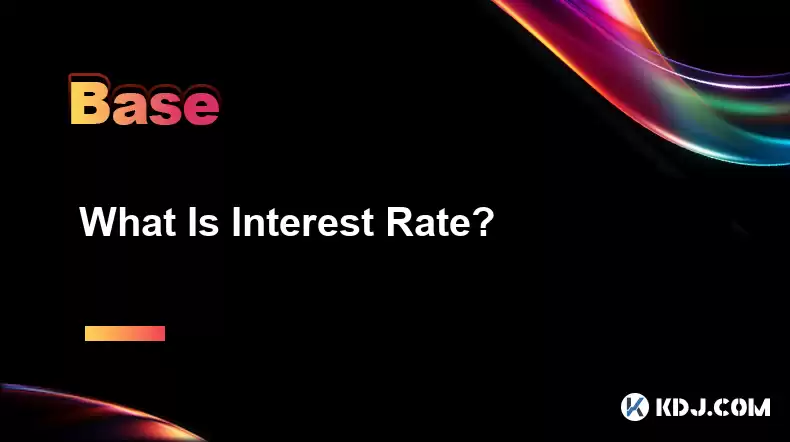-
 Bitcoin
Bitcoin $115000
0.12% -
 Ethereum
Ethereum $3701
4.50% -
 XRP
XRP $3.081
2.99% -
 Tether USDt
Tether USDt $0.0000
-0.01% -
 BNB
BNB $767.9
1.45% -
 Solana
Solana $169.5
3.13% -
 USDC
USDC $0.9999
0.01% -
 Dogecoin
Dogecoin $0.2106
4.30% -
 TRON
TRON $0.3334
1.62% -
 Cardano
Cardano $0.7564
2.54% -
 Stellar
Stellar $0.4165
0.76% -
 Hyperliquid
Hyperliquid $38.75
0.25% -
 Sui
Sui $3.593
3.00% -
 Chainlink
Chainlink $17.08
3.59% -
 Bitcoin Cash
Bitcoin Cash $573.6
4.35% -
 Hedera
Hedera $0.2508
-0.84% -
 Avalanche
Avalanche $23.07
6.46% -
 Ethena USDe
Ethena USDe $1.001
-0.02% -
 Litecoin
Litecoin $120.8
8.17% -
 UNUS SED LEO
UNUS SED LEO $8.943
-0.32% -
 Toncoin
Toncoin $3.400
-5.60% -
 Shiba Inu
Shiba Inu $0.00001255
1.54% -
 Uniswap
Uniswap $9.908
6.32% -
 Polkadot
Polkadot $3.718
2.10% -
 Monero
Monero $303.0
-0.74% -
 Dai
Dai $0.9999
-0.02% -
 Bitget Token
Bitget Token $4.392
0.91% -
 Cronos
Cronos $0.1403
6.31% -
 Pepe
Pepe $0.00001076
1.13% -
 Aave
Aave $267.2
1.80%
What Is Interest Rate?
Central banks play a pivotal role in managing interest rates to maintain economic stability, stimulating growth, and ensuring financial harmony through tools like open market operations and reserve requirements.
Dec 16, 2024 at 07:04 pm

Key Points:
- Definition of Interest Rate: An economic concept representing the cost of borrowing money or the return earned on saving money over a specified period.
- Factors Influencing Interest Rates: Central bank policies, inflation rate, economic growth, supply and demand for funds, government spending.
- Types of Interest Rates: Fixed-rate, variable-rate, floating-rate.
- Impact of Interest Rates: Stimulate or slow down economic activity, influence investment and consumption behavior.
- Interest Rate Tools: Open market operations, reserve requirements, discount window.
- Central Bank's Role: Manage interest rates to achieve economic stability and growth.
- Historical Perspectives of Interest Rates: Vary over time and across countries based on economic conditions and policies.
What Is Interest Rate?
In the world of finance, interest rate is a fundamental concept that influences the flow of money and the overall performance of an economy. It is the compensation paid for the use of borrowed money or the reward earned for saving money over a specific period.
Factors Influencing Interest Rates:
Interest rates are not static and are influenced by a multitude of economic factors. Central bank policies, represented by monetary policies, play a significant role in shaping interest rates. Monetary policies aim to stabilize the economy by controlling the supply of money and manipulating interest rates.
Inflation, the rate at which prices rise over time, is another key factor. When inflation is high, central banks tend to raise interest rates to curb inflationary pressures and maintain price stability.
Economic growth also impacts interest rates. During periods of robust economic growth, demand for borrowing increases, which can lead to rising interest rates. Conversely, slow economic growth or a recession can result in lower interest rates to stimulate spending and investment.
The supply and demand for funds in the financial market also influence interest rates. When the demand for funds exceeds supply, interest rates tend to rise. This can occur during economic expansions or when governments borrow heavily to finance deficits.
Types of Interest Rates:
Interest rates can be classified into different types based on how they are determined and how they change over time.
- Fixed-rate: The interest rate remains the same for the entire duration of the loan or savings account.
- Variable-rate: The interest rate is adjusted based on an underlying reference rate, such as the prime rate or LIBOR.
- Floating-rate: A variation of variable-rate, floating-rate interest rates change along with a specific index or metric.
Impact of Interest Rates:
Interest rates play a multifaceted role in the economy, influencing both individual behavior and macroeconomic trends.
- Investment and consumption: Low interest rates encourage borrowing and spending, while higher interest rates tend to curb investment and discretionary spending.
- Economic activity: Monetary policies that increase interest rates can slow down economic growth, as businesses and consumers become less inclined to borrow and spend. Conversely, reducing interest rates can stimulate economic activity by encouraging investment and consumption.
Interest Rate Tools:
Central banks employ various tools to influence interest rates and achieve their economic objectives.
- Open market operations: Buying or selling government securities to increase or decrease the supply of money in the market, respectively.
- Reserve requirements: Regulating the amount of cash that banks are required to hold as reserves, effectively influencing the amount of money they have available for lending.
- Discount window: A facility provided by central banks where commercial banks can borrow funds to meet short-term liquidity needs, impacting the overall level of interest rates.
Central Bank's Role:
Central banks play a crucial role in managing interest rates. By adjusting interest rates, they aim to:
- Stabilize inflation by controlling the rate of price increases.
- Promote economic growth and employment by stimulating economic activity.
- Ensure financial stability by preventing excessive risk-taking and bubbles.
Historical Perspectives of Interest Rates:
Interest rates have varied dramatically over time and across countries, reflecting changing economic conditions and monetary policies.
- Ancient history: Interest rates existed in ancient civilizations, with religious laws often dictating restrictions on lending and interest charges.
- Medieval period: Interest was generally banned due to religious beliefs, but money-lending practices prevailed despite the prohibitions.
- Modern era: Central banks emerged to manage interest rates and monetary policy, playing a significant role in economic development and stability.
FAQs Related to Interest Rates:
- What is the prime rate? The prime rate is a benchmark interest rate charged by banks to their most creditworthy customers. It is used as a reference point for setting interest rates on other types of loans.
- How do interest rates affect bonds? When interest rates rise, bond prices typically fall, because new bonds with higher interest rates become more attractive to investors.
- What is the difference between interest rate and yield? Yield is a broader term that encompasses both interest rate and any additional return generated by an investment, such as capital gains or dividends.
- How do I calculate interest? Interest can be calculated using the simple interest formula: Interest = Principal × Interest Rate × Time, where "Time" is expressed in years.
- What is monetary policy? Monetary policy refers to the set of tools and strategies employed by central banks to control the supply of money and interest rates to achieve economic objectives.
Disclaimer:info@kdj.com
The information provided is not trading advice. kdj.com does not assume any responsibility for any investments made based on the information provided in this article. Cryptocurrencies are highly volatile and it is highly recommended that you invest with caution after thorough research!
If you believe that the content used on this website infringes your copyright, please contact us immediately (info@kdj.com) and we will delete it promptly.
- Crypto Airdrops: Your August 2025 Guide to Free Tokens & Opportunities
- 2025-08-05 13:45:13
- Luxury Dining Reimagined: St. Regis Singapore & Marriott's Culinary Celebration
- 2025-08-05 13:45:13
- Fancy Farm Picnic: A Sneak Peek at the 2026 US House Race
- 2025-08-05 13:50:12
- Cardano Price, ADA Forecast & Ethereum Price: What's the Buzz?
- 2025-08-05 13:50:12
- Velo Universe, DEX, and DeFi Security: Navigating the Future of Decentralized Trading
- 2025-08-05 09:25:13
- Bitget Wallet Revolutionizes Solana with Gas-Free Transactions: A New Era for DeFi
- 2025-08-05 09:25:13
Related knowledge

What is the difference between CeFi and DeFi?
Jul 22,2025 at 12:28am
Understanding CeFi and DeFiIn the world of cryptocurrency, CeFi (Centralized Finance) and DeFi (Decentralized Finance) represent two distinct financia...

How to qualify for potential crypto airdrops?
Jul 23,2025 at 06:49am
Understanding What Crypto Airdrops AreCrypto airdrops refer to the distribution of free tokens or coins to a large number of wallet addresses, often u...

What is a crypto "airdrop farmer"?
Jul 24,2025 at 10:22pm
Understanding the Role of a Crypto 'Airdrop Farmer'A crypto 'airdrop farmer' refers to an individual who actively participates in cryptocurrency airdr...

What is the difference between a sidechain and a Layer 2?
Jul 20,2025 at 11:35pm
Understanding the Concept of SidechainsA sidechain is a separate blockchain that runs parallel to the main blockchain, typically the mainnet of a cryp...

What is the Inter-Blockchain Communication Protocol (IBC)?
Jul 19,2025 at 10:43am
Understanding the Inter-Blockchain Communication Protocol (IBC)The Inter-Blockchain Communication Protocol (IBC) is a cross-chain communication protoc...

How does sharding improve scalability?
Jul 20,2025 at 01:21am
Understanding Sharding in BlockchainSharding is a database partitioning technique that is increasingly being adopted in blockchain technology to enhan...

What is the difference between CeFi and DeFi?
Jul 22,2025 at 12:28am
Understanding CeFi and DeFiIn the world of cryptocurrency, CeFi (Centralized Finance) and DeFi (Decentralized Finance) represent two distinct financia...

How to qualify for potential crypto airdrops?
Jul 23,2025 at 06:49am
Understanding What Crypto Airdrops AreCrypto airdrops refer to the distribution of free tokens or coins to a large number of wallet addresses, often u...

What is a crypto "airdrop farmer"?
Jul 24,2025 at 10:22pm
Understanding the Role of a Crypto 'Airdrop Farmer'A crypto 'airdrop farmer' refers to an individual who actively participates in cryptocurrency airdr...

What is the difference between a sidechain and a Layer 2?
Jul 20,2025 at 11:35pm
Understanding the Concept of SidechainsA sidechain is a separate blockchain that runs parallel to the main blockchain, typically the mainnet of a cryp...

What is the Inter-Blockchain Communication Protocol (IBC)?
Jul 19,2025 at 10:43am
Understanding the Inter-Blockchain Communication Protocol (IBC)The Inter-Blockchain Communication Protocol (IBC) is a cross-chain communication protoc...

How does sharding improve scalability?
Jul 20,2025 at 01:21am
Understanding Sharding in BlockchainSharding is a database partitioning technique that is increasingly being adopted in blockchain technology to enhan...
See all articles

























































































